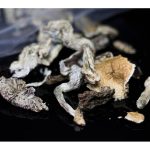
A new study finds that people working with artificial intelligence (AI) systems can be lonely, suffer from insomnia and drink more heavily after work. In the study, published online June 12 in the Journal of Applied Psychology, the researchers noted these findings don’t prove that working with AI systems causes loneliness or other responses, just that they are associated. The research involved four experiments in the United States, Taiwan, Indonesia and Malaysia. “The rapid advancement in AI systems is sparking a new industrial revolution that is reshaping the workplace with many benefits but also some uncharted dangers, including potentially damaging mental and physical impacts for employees,” said lead researcher Pok Man Tang, an assistant professor of management at the University of Georgia. “Humans are social animals, and isolating work with AI systems may have damaging spillover effects into employees’ personal lives,” he said in a journal news release. Working with AI systems can have some benefits, the researchers found. For example, employees who use AI systems are more likely to be helpful to fellow workers, but that may be triggered by loneliness and the need for social contact, Tang’s team said. The researchers also found that those with high levels of attachment anxiety, which is feeling insecure and worried about social connections, reported working with AI systems made them more likely to help others. They… read on > read on >


















